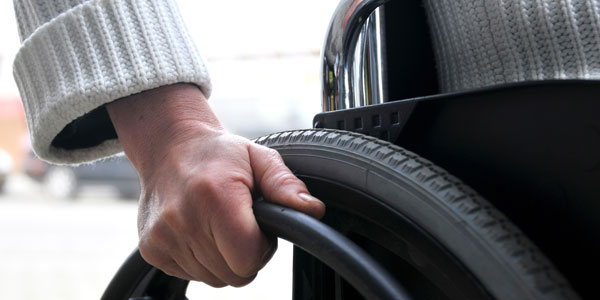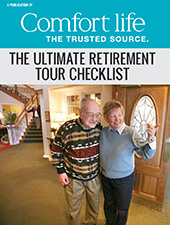Wheelchair accessible travel

Taking a vacation can be a daunting task for an older adult who uses a wheelchair. There is so much to think about and so much planning to do.
Here are some tips to streamline the process and ensure that you have a great holiday. Bon Voyage!
GENERAL TIPS
- Plan ahead and book early: Accessible resources are limited, so if you require a wheelchair accessible cabin or hotel room (especially one with a roll-in shower), make reservations early – several months in advance if possible – to avoid disappointment.
- Ask specific questions: When making any type of reservation, whether it is for a hotel, medical equipment, a van, or an attraction, ask VERY SPECIFIC questions. For example, don't let someone get away with answering you with a quick "yes, we are wheelchair accessible," because a lot of times they really aren't.
- Always check and double check reservations. Nothing is more frustrating than thinking you have a reservation for something, only to find out when you arrive that they recorded it incorrectly, or worse yet, have no record of it.
FLYING
Before You Go:
- When booking, be very specific about your situation and requirements i.e. an aisle seat, bulkhead seats, seats beside each other, what type of wheelchair you are in (manual or electric--wet cell or dry cell batteries), and whether or not you will need an aisle chair and assistance boarding the plane.
- Always take a nonstop flight You may save a little money with connecting flights, but changing planes means that the baggage handlers have to handle your wheelchair one more time, and you won’t have the chance to give any instructions to them. If your first flight is late you could miss the connecting one and have to wait until the next day to get a flight.
- Get your vehicle serviced Have your wheelchair or scooter routinely serviced before you go so that you are sure everything is in working order for the trip.
- Bring extra parts and basic tools Bring some extra wheelchair or scooter parts (such as tire tubes) plus some basic tools (screwdriver, allen keys, duct tape) in case you run into trouble during your travels. You never know when you are going to get a flat tire.
- Get a neck cushion It could be the best seven dollars you will ever spend. For my first few flights I was always incredibly uncomfortable sitting in the airplane seat. My Roho cushion is a few inches thick and since I sit on it in the plane, there was nothing to lean my head on. Fortunately a woman loaned me her inflatable neck support and now I always bring mine along.
- Label sensitive or delicate areas on your wheelchair that you will not be able to remove and take with you into the cabin of the plane. That way baggage handlers know not to touch or remove them.
- Check and double-check your reservations i.e. seats beside each other, aisle seat, aisle chair etc.
At The Airport:
- ‘Gate-check” your wheelchair at check-in. Many check-in agents will automatically gate-check your wheelchair but sometimes you have to ask them. They will put a tag on it that tells the baggage handlers at your destination to immediately bring your wheelchair to the gate (the door of the plane) rather than to the baggage claim. That way an airport official doesn’t have to push you in one of their wheelchairs to the baggage claim so that you can get pick up your own chair.Sometimes they can’t bring your wheelchair back to the gate when you reach your destination because there’s no elevator to bring the wheelchair up from the cargo hold. If that’s the case, they will bring it to the baggage claim.
- Skip the priority stickers Check-in agents often tag the checked luggage of a person with a disability with priority stickers so that they are the first bags off of the airplane and onto the baggage carousel. However, people who need wheelchair assistance are always the last ones off of the airplane. I don't like my bags going round and round on the carousel when I'm not there. If you see priority stickers being put on your checked baggage, tell them it's not necessary (unless of course you would like it).
- Remove loose or vulnerable chair parts Immediately after you transfer out of your wheelchair (and before they take it away), remove any loose or vulnerable parts such as joysticks and footrests and store them in the overhead compartment above your seat. If you don’t, they may get damaged or lost by the time you reach your destination.
- Secure loose or moveable parts (e.g. a swing-away joystick) on your wheelchair that you cannot remove and take on the plane with you. Otherwise they are likely to get damaged in the cargo hold.
- Remove chair batteries Take the batteries out of your electric wheelchair yourself at the airport and sit them on the seat. Tell the baggage handlers what kind of batteries they are and how they should handle them, and then you "should" be fine. It is much safer to disconnect the batteries yourself than to let the baggage guys do it. They might damage something and they are EXTREMELY paranoid about the storage of batteries during the flight, especially wet cell (acid) batteries. As a basic rule, it's better to take as much of your chair apart on your own as possible.
IN FLIGHT
Avoid the bathroom if you can. No matter what the airlines tell you, bathrooms on board airplanes are not very accessible at all -- especially for someone who might require assistance from a caregiver. They are incredibly small and can really only fit one person. Watch what you eat and drink that day so that you do not have to use the bathroom during the flight. Or use the bathroom inside the airport just before you board because it will be bigger and far easier to use. If you have to use the plane’s bathroom, the flight attendant will bring the onboard wheelchair to your seat and help you wheel to the bathroom. If you require help inside the bathroom and transferring into the chair, you must provide your own caregiver. If you think you may have to use the plane’s bathroom, follow up with the airline when you make your reservation and again a few days prior to the flight to clarify their policy and to ensure that they will have an onboard wheelchair on your flight.
By James Glasbergen, Director of Accessible Travel for Frederick Travel
World On Wheelz and its worldwide team specialize in travel arrangements with the highest standards of accessibility. http://www.worldonwheelz.com


